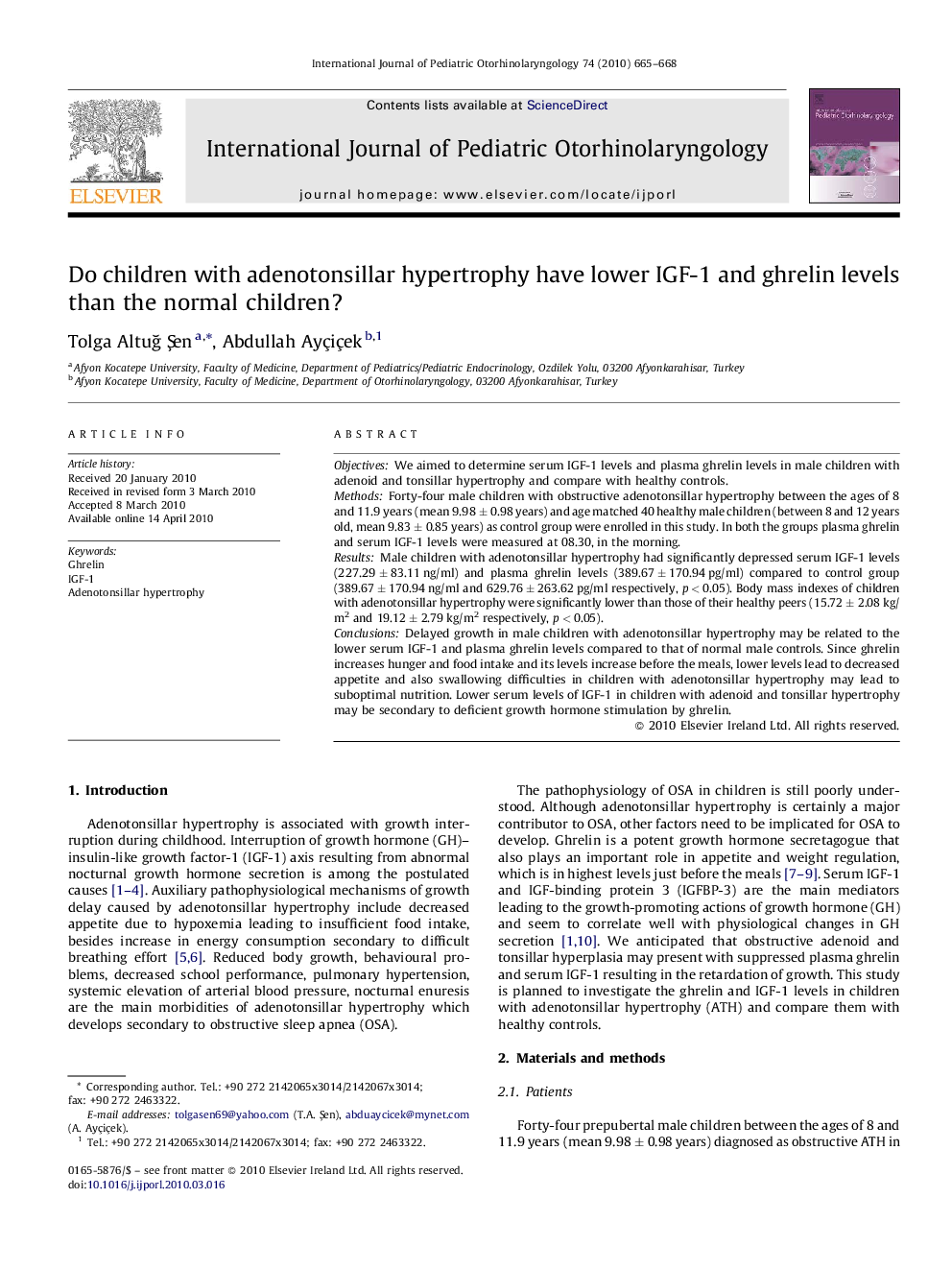| Article ID | Journal | Published Year | Pages | File Type |
|---|---|---|---|---|
| 4114063 | International Journal of Pediatric Otorhinolaryngology | 2010 | 4 Pages |
ObjectivesWe aimed to determine serum IGF-1 levels and plasma ghrelin levels in male children with adenoid and tonsillar hypertrophy and compare with healthy controls.MethodsForty-four male children with obstructive adenotonsillar hypertrophy between the ages of 8 and 11.9 years (mean 9.98 ± 0.98 years) and age matched 40 healthy male children (between 8 and 12 years old, mean 9.83 ± 0.85 years) as control group were enrolled in this study. In both the groups plasma ghrelin and serum IGF-1 levels were measured at 08.30, in the morning.ResultsMale children with adenotonsillar hypertrophy had significantly depressed serum IGF-1 levels (227.29 ± 83.11 ng/ml) and plasma ghrelin levels (389.67 ± 170.94 pg/ml) compared to control group (389.67 ± 170.94 ng/ml and 629.76 ± 263.62 pg/ml respectively, p < 0.05). Body mass indexes of children with adenotonsillar hypertrophy were significantly lower than those of their healthy peers (15.72 ± 2.08 kg/m2 and 19.12 ± 2.79 kg/m2 respectively, p < 0.05).ConclusionsDelayed growth in male children with adenotonsillar hypertrophy may be related to the lower serum IGF-1 and plasma ghrelin levels compared to that of normal male controls. Since ghrelin increases hunger and food intake and its levels increase before the meals, lower levels lead to decreased appetite and also swallowing difficulties in children with adenotonsillar hypertrophy may lead to suboptimal nutrition. Lower serum levels of IGF-1 in children with adenoid and tonsillar hypertrophy may be secondary to deficient growth hormone stimulation by ghrelin.
